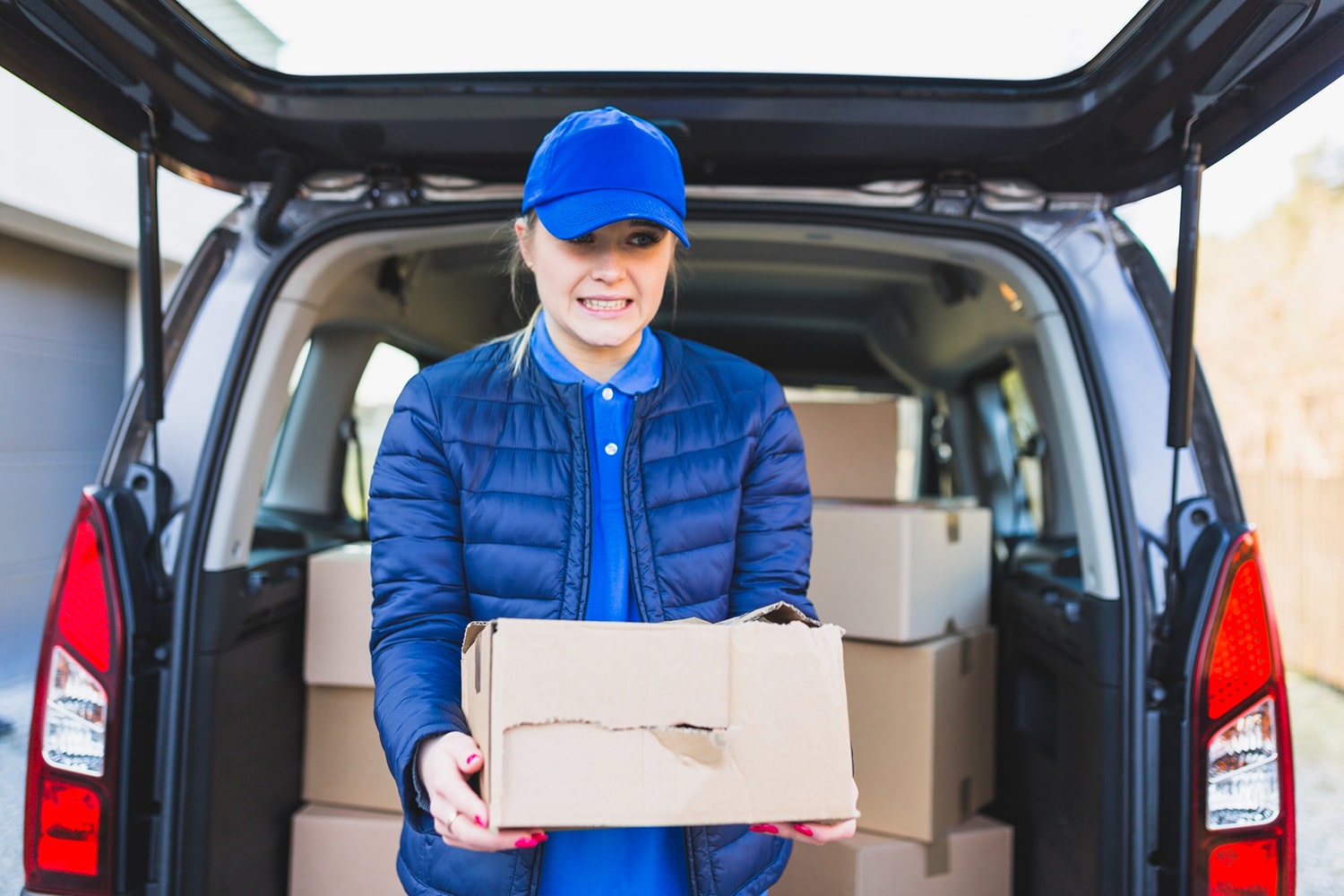When customers buy from you, they don’t get the privilege of inspecting their packages physically; therefore, when they receive a damaged item, they may wonder if that’s what they paid for. This can cause a lot of frustration which can lead to them leaving a negative review about your business.
And like that is not enough, you may have to make replacements or pay for refunds which can be expensive. Therefore, it’s a no-brainer that you ought to know the common causes of shipping damages and the steps you can take to prevent them.
If you would like to save money on shipping, Betachon can help you with that. We will audit your shipping operations and recommend ways to cut costs. Schedule a demo to learn more about how you can ship affordably!
6 most common causes of shipping damages and how to avoid them
Here are the reasons why packages get damaged during the shipping process and how you can prevent them from happening.
Leaving extra space in the box
If you use a box too big for the item you’re shipping, it’s clear that the item will sway, and if there’s not enough padding, it will probably get damaged. It might get broken or disfigured.
Solution: Use the correct box size
Consider the dimensions of your product first before picking a box. The box should fit the product well without squeezing it or leaving too much space.
What’s more, carriers typically use dimensional box weight to charge shippers. The bigger and heavier the box, the more they charge. Therefore, smaller, lightweight boxes will save you a coin and prevent shipping damage.
Not using cushioning material
Most businesses use cushioning or padding material when shipping fragile items and no padding on nonfragile packages. This shouldn’t be the case. Most items are not fragile, but they can get damaged if not packed with padding.
Solution: Wrap all items
Wrap all your items, whether fragile or not. When shipping multiple items in one box, wrap all of them separately if possible. The material you use for wrapping (padding) will depend on the item you’re shipping. Use bubble wrap, air pillows, and recycled paper.
Improper handling
Your package will go through many hands before it reaches your customer. This increases the chances of it getting mishandled. And even if you ask your logistics partner to be careful with your package, it still doesn’t guarantee they will.
Solution: Add a note and get an insurance
Adding a note on your packages stating that your items are fragile and should be handled with care can save you a lot of item replacements.
But don’t stop there. Pay for additional handling fees. Most carriers charge an extra fee for special handling of items. If need be, pay for this service.
Moreover, you can get insurance coverage to cater to the costs of damages experienced during the shipping process. Ask your carrier for it or get third-party insurance.
Poor weather
Poor weather is also a major cause of product damage during shipping. It can rain, there can be an increase in humidity, and earthquakes can happen, all of which can damage the package and the items inside.
If a customer’s product is left outside after delivery and it rains, the water can damage the package and its content.
Solution: Use protective packaging materials
Consider investing in protective packing materials as the primary material. This will ensure your items are well protected from extreme weather, even if you use a box or a poly bag on the outside.
Poor choice of transit routes

If your delivery drivers use routes with high traffic, it may lead to delayed delivery, which can cause a lot of damage.
First, if the item is perishable, it may spoil. Second, you risk making your customers unhappy, which can hurt your brand’s reputation, as your customers won’t think twice about leaving a review stating how slow your services are.
Also, if the routes you use have potholes, you risk damaging the contents inside, especially if you don’t use the right size of packaging material.
Solution: Choose your routes wisely
While you may not have control over which routes every delivery driver that works with you should use, those that you can get a hold of, like your fulfillment or warehouse partner, you can advise them to choose their routes wisely and distribute weight evenly.
Infestation
If you sell food, an infestation is a problem you might experience, especially if you ship internationally. Rodents and insects can damage the packaging material and contaminate the food, making it unconsumable.
Another problem with food shipping is delayed delivery. If the carrier you’re using delays, there are high chances the food will spoil. This means you’ll have to ship, replace the food, and pay for shipping again.
Solution: Use air-tight packaging and choose your freight partner wisely
Air-tight packaging will help prevent any element like hot air from getting inside and spoiling the food. Also, consider using a shipping label on your package to instruct those handling it to avoid rough handling, as it can bruise and damage the food, especially if it’s fresh produce.
Another solution is using air freight companies like GDS Freight. GDS Freight is a one-stop shop for all your shipping and compliance needs. Your packages will be well taken care of.
Avoid shipping damages
Shipping damages can cost you a lot of money. You may be required to make replacements or refund the whole amount. You can avoid most damages if you take better care of packages. To achieve this, make wise decisions from the packing process to the delivery step.
Use well-fitting boxes, weather-resistant primary packing material, and cushioning material. Improve package handling during the supply process, and prevent infestation, especially if you’re shipping food.
If you would like someone to look at your shipping operations and help you with your lost and damaged claims or carrier agreement compliance, we can help you.
Betachon will audit your shipping operations to help you make smart moves. Our methods have been tested and proven to work. Schedule a demo today, and let’s get started.
